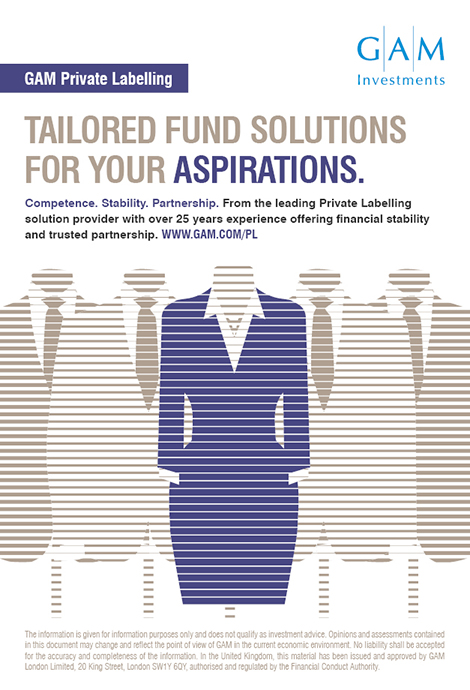There are times of structural and disruptive changes which an industry undergoes, sometimes initiated by one strong trigger and having a rather short duration. And then there are times that bring a shift of tectonic plates that occurs gradually, triggered by multiple factors and lasting for long.
The current shift that the fund industry is experiencing from a fund of funds to fund of mandates structures is fundamental and is here to stay for good. The reasons why we believe that this trend will persist are multiple. Funds of mandates are not only applicable to traditional plain vanilla UCITS, but also to liquid alternatives and illiquid strategies. They are significantly more cost-efficient than funds of funds and have higher transparency while providing access to investment expertise that might not be available to the end investors otherwise.
Nowadays, private banks are facing a number of challenges: wealth management clients and ultra-high-net-worth individuals (UHNWI) are increasingly looking for innovative and more efficient alternatives in the management of their wealth. Against the backdrop of industry trends like negative interest rates and constant pressure on fees, banks are challenged to protect their profitability, while opening new horizons for their clients. Private banks often struggle to gain access and manage exposure to liquid alternative strategies in the most efficient way.
In light of the above, GAM Private Labelling has developed a customised and regulated multi-manager investment vehicle providing a scalable solution to both banks and wealth managers, allowing them to get direct access also to this asset class: The fund of mandates.
A fund of mandates’ portfolio management is typically delegated to several external investment managers aiming to deliver a broadly diversified portfolio in terms of styles, managers and underlying securities.
There are several fundamental differences between a Fund of Funds and a Fund of Mandates. I would like to highlight the three most important ones:
A fund of funds is a fund that invests in other funds, in other words, invests indirectly. A fund of mandates, on the contrary is a directly investing fund itself
A fund of funds has an expensive commercial profile with a double layer of fees – one is the fee for the fund of funds itself and then the fee applicable at the level of the underlying target funds. By contrast, a fund of mandates has a single layer of fees, equal to every directly investing fund
There are differences in regulatory burdens: A fund of funds is allowed to invest only in target funds that have an equal regulatory status. Unlike a fund of funds, a fund of mandates can implement the underlying strategy directly without having to match the regulatory regime of another vehicle
In addition, costs are a crucial topic for banks and wealth managers and funds of mandates are poised to become the new way of setting up cost-efficient portfolios going forward.
But it is not only about the lower cost. Funds of mandates also allow banks and wealth managers to implement a best of breed multi-manager strategy, as well as to see the actual holdings without a time lag. Eligible for both (traditional and alternative) liquid and illiquid investment strategies, a fund of mandates provides easy handling, broad accessibility and low costs. A fund of mandates can be established under Luxembourgish law as a UCITS or specialised investment fund/reserved alternative investment fund. It can be structured either as a stand-alone vehicle or a sub-fund under an existing umbrella. And: once set up in Luxembourg, the vehicle can be distributed all across the EU and beyond.
Given the increasing demand for illiquid alternatives, gaining access to the best investment expertise worldwide becomes essential for banks and wealth managers. In times like the current extraordinary pandemic, the possibilities to travel abroad to perform onsite due diligence on an investment manager are very limited. Hence it is of essential importance that one can partner with a platform that already has direct access to a variety of investment managers, has already performed the due diligence on them and hence can provide a ‘plug-and-play’ solution.
GAM Private Labelling has long-standing expertise in dealing with the largest players in the market. For example, currently, we host over 80 external investment managers on our platform. We are specialised in managing static and dynamic allocations for institutional investors.
GAM’s innovative platform and its collaboration with the largest players in the market ensure high quality, a global network and sustainability of the delivered product.
Our independent management company in Luxembourg takes care of designing, building and running the funds of mandates for our clients on their behalf. With a proven track record of nearly 30 years as a management company of third-party funds, we understand how important it is to be independent when preserving our clients’ interests. We are neither a distributor nor part of a bank, but an intermediate player building the bridge between the needs of investors and the capabilities of asset managers across the globe. This is why we are free of conflicts of interest with either side of the market.
Our clients focus on their core competences as asset allocators and manager selectors and have full freedom in selecting the investment managers they would like to partner with. Together with our clients, we define the features, investment focus and regulatory/tax setup of their fund.
Our clients can pick and choose out of the 80 plus external investment managers on our platform or select any others. We then build, manage and re-allocate the fund and its exposure to different investment managers in accordance with the instructions of the client.
The client can also easily exchange an investment manager by appointing another one.
The process is usually divided into four stages:
Structuring: Definition of the features, investment focus and regulatory/tax setup of the fund
Manager selection: Our clients can pick and choose out of the 80 plus external asset managers on our platform or select others
Implementation: We establish the fund legally and operationally and establish a connection to the selected managers in accordance with the instructions of the client
Dynamic modification: The client is free to re-allocate the fund and its exposure to the selected investment managers while we take care of day-to-day operations and any changes to the fund
Your client director: the key to easy handling
In addition, GAM Private Labelling offers a unique client experience as we provide our clients with a single point of contact throughout the entire lifecycle of our partnership. From engaging in talks at the early beginning of our relationship to their role as a project manager during the setup of the solution to ongoing relationship management — the dedicated client director remains at the client’s side for all requests and concerns that may arise.
Key advantages of our solution
In summary, a fund of mandates:
Combines the expertise of external managers, not always accessible through direct mandates or not always accessible for wealthy private investors directly
Typically spreads the portfolio management between several external managers and products delivering a broadly diversified set of styles, managers and underlying assets
Enables banks and wealth managers to focus on the asset allocation and manager selection
Can be applied to both liquid and illiquid investments and hence represent a powerful instrument in private banking and the UHNWI segment
It allows the bank or wealth manager to protect its profitability in an environment full of regulatory and market challenges such as MiFID, negative interest rates and the likes
It also presents a very efficient and scalable solution in terms of providing easy handling, transparent consolidation and low costs for managing segregated mandates



